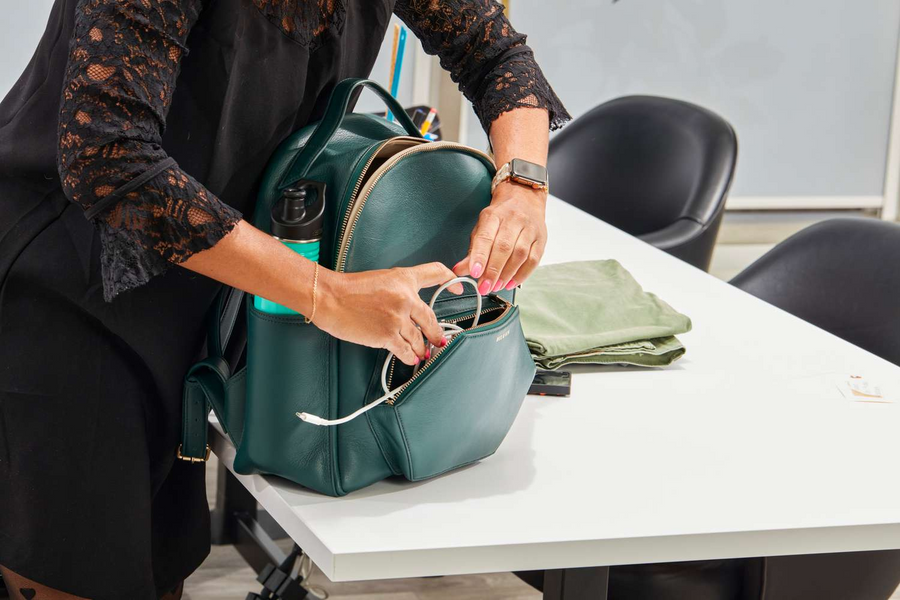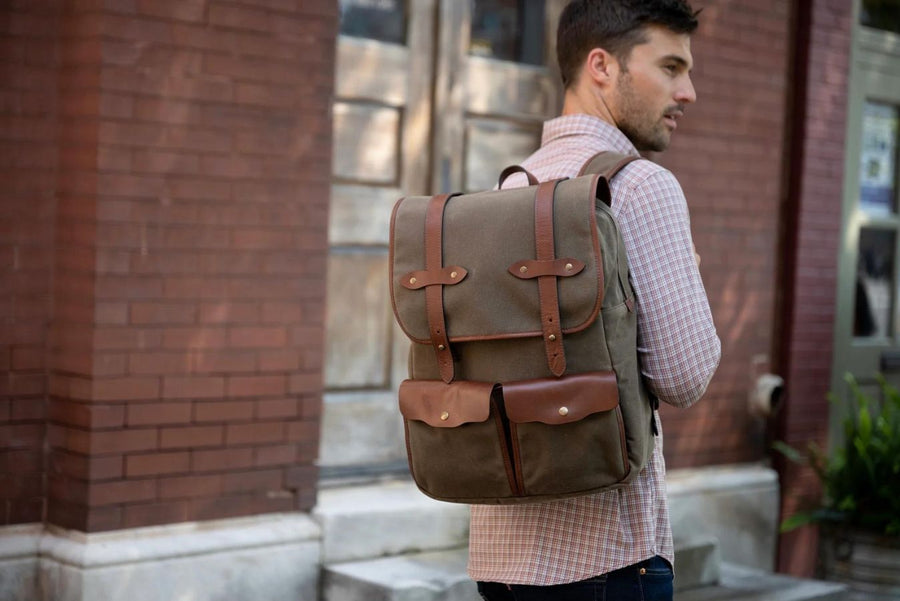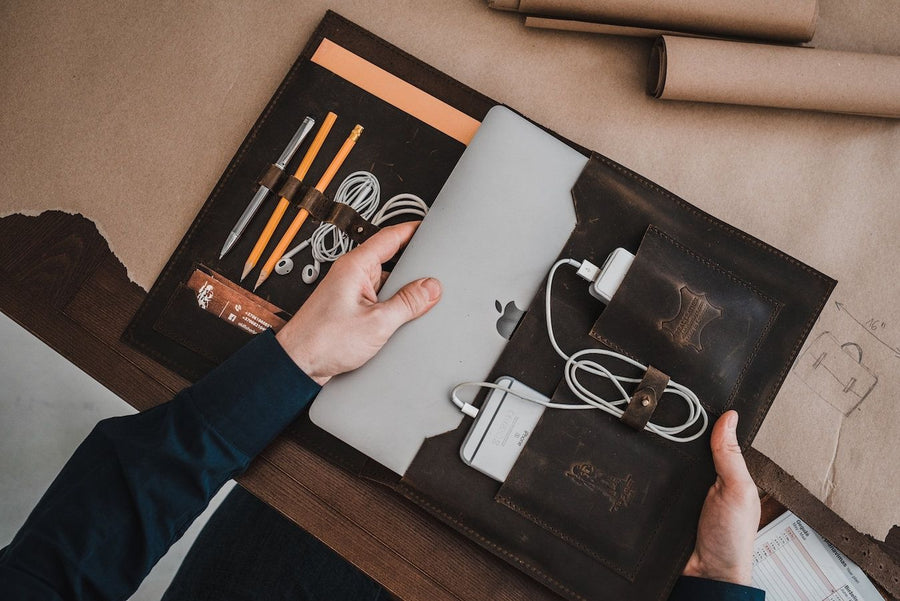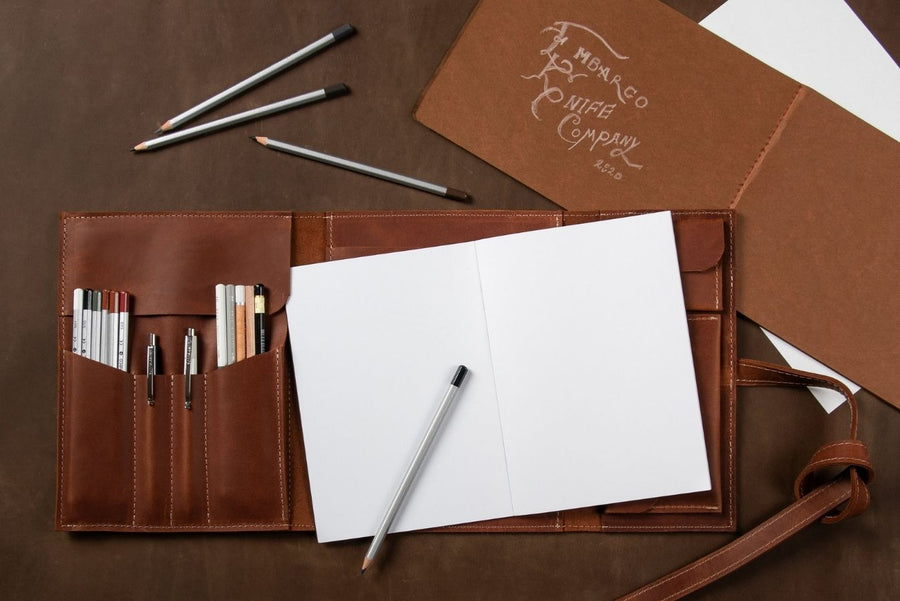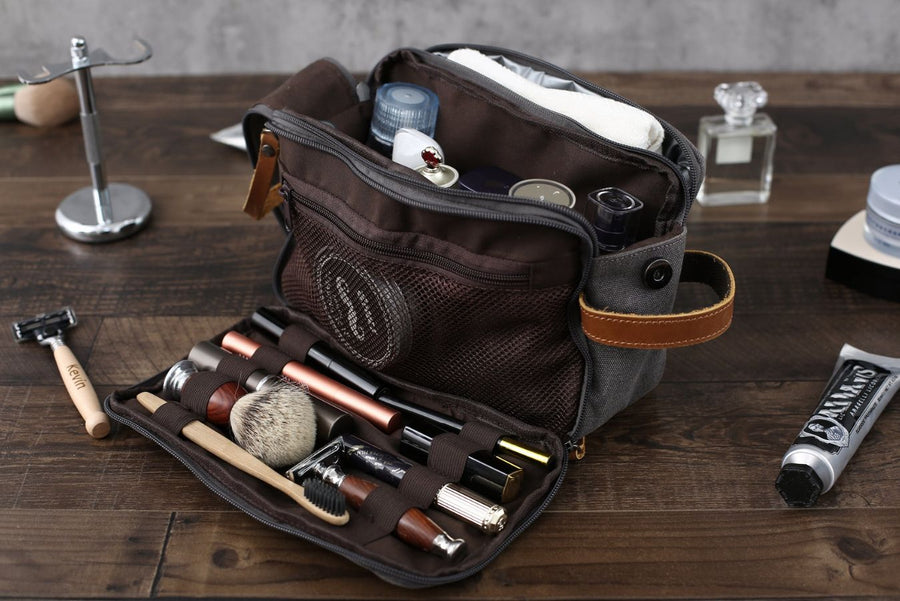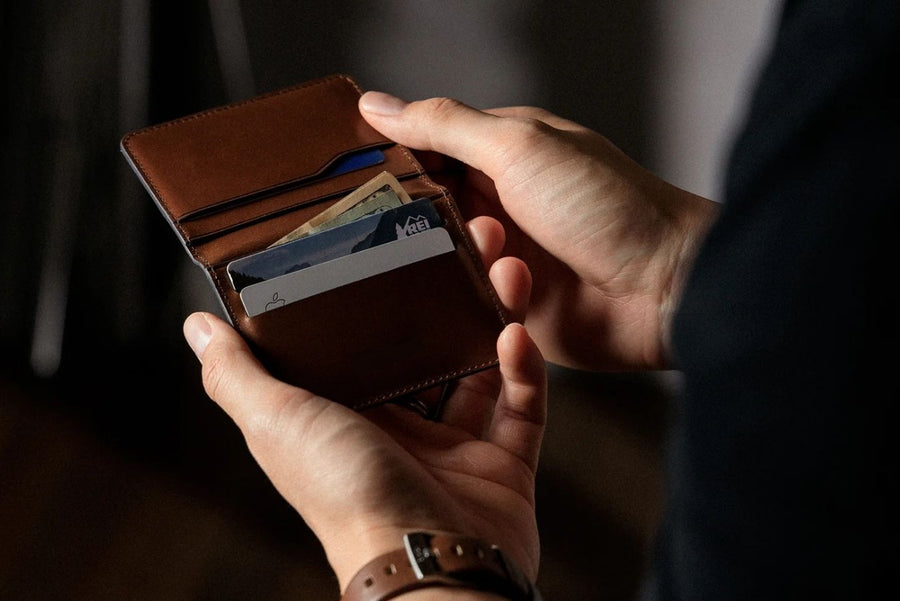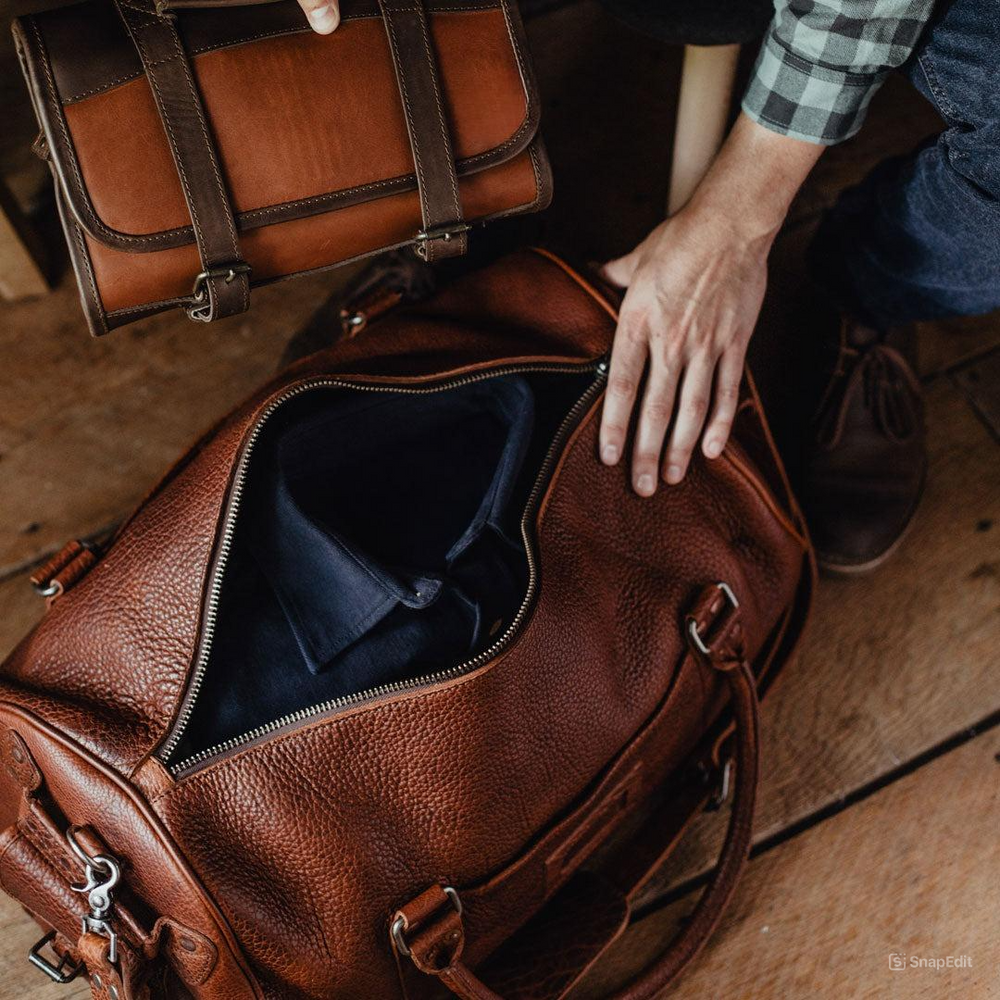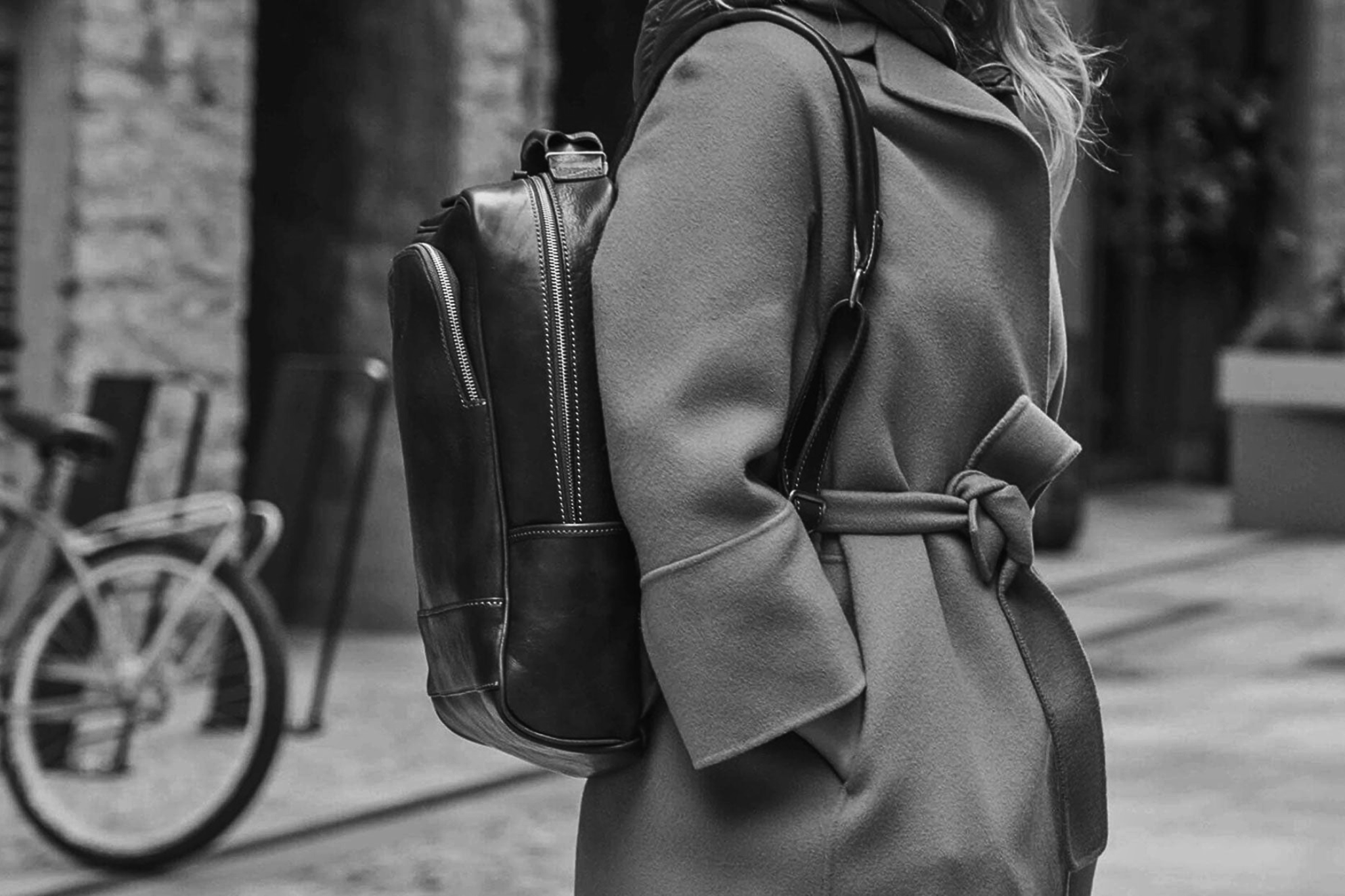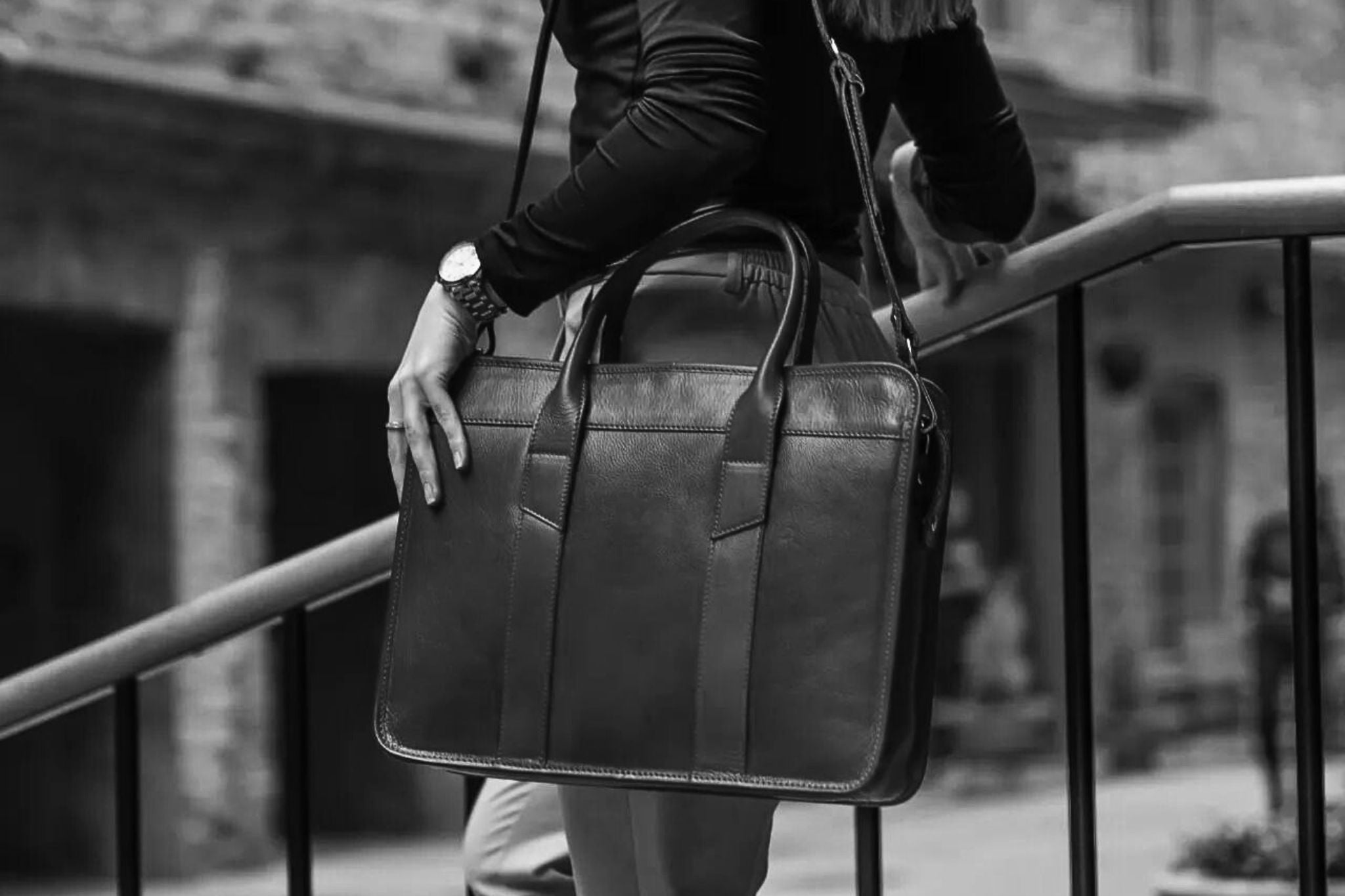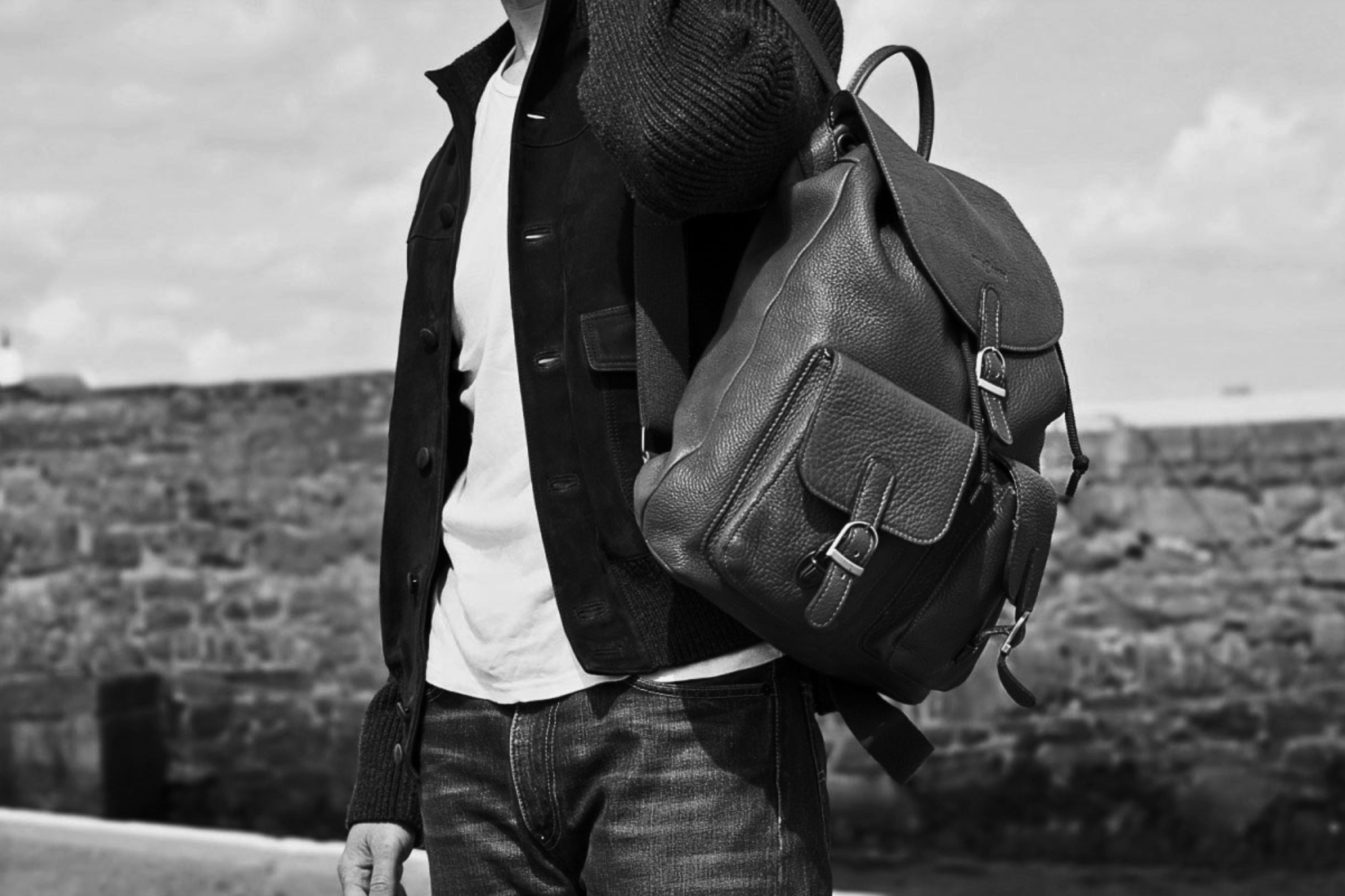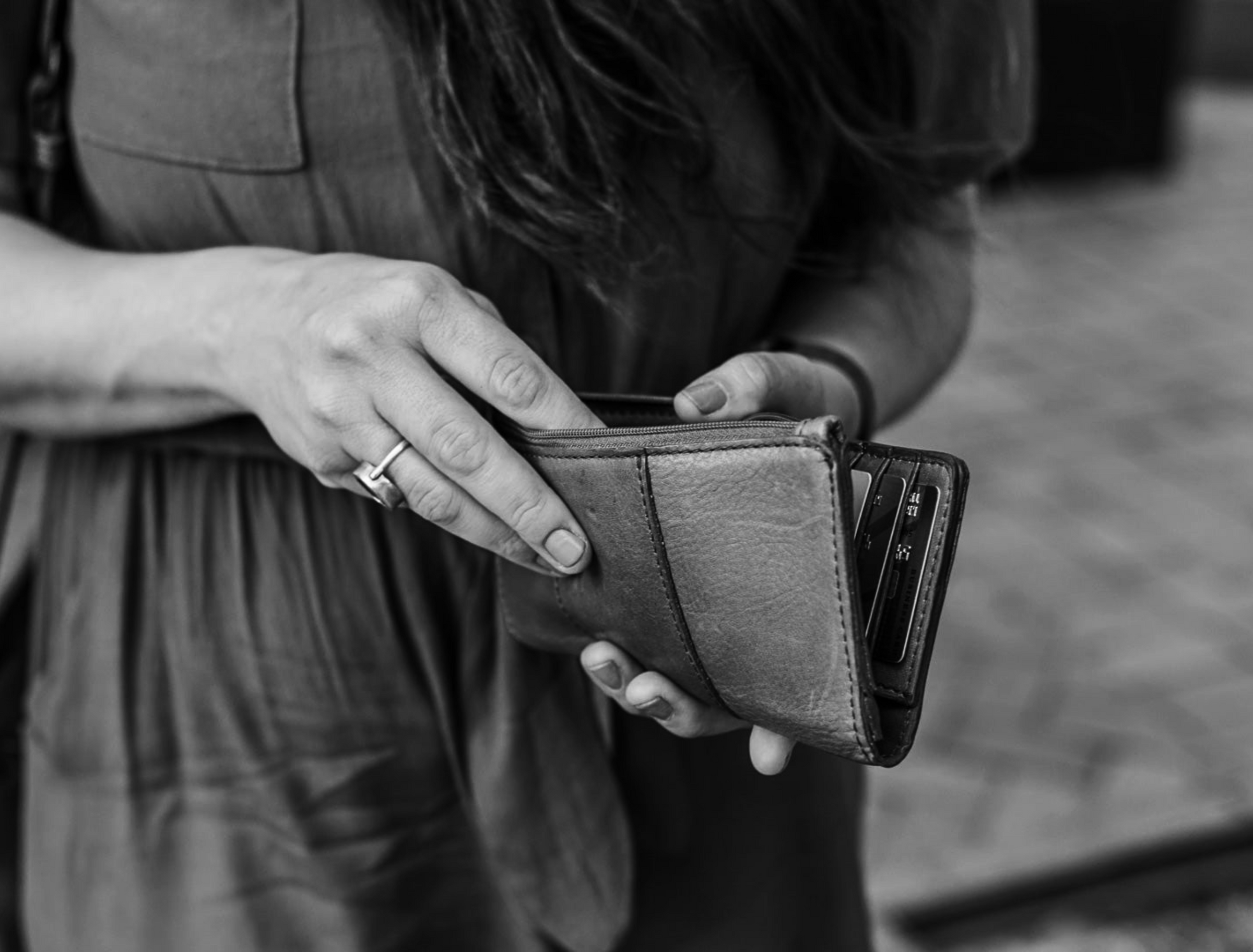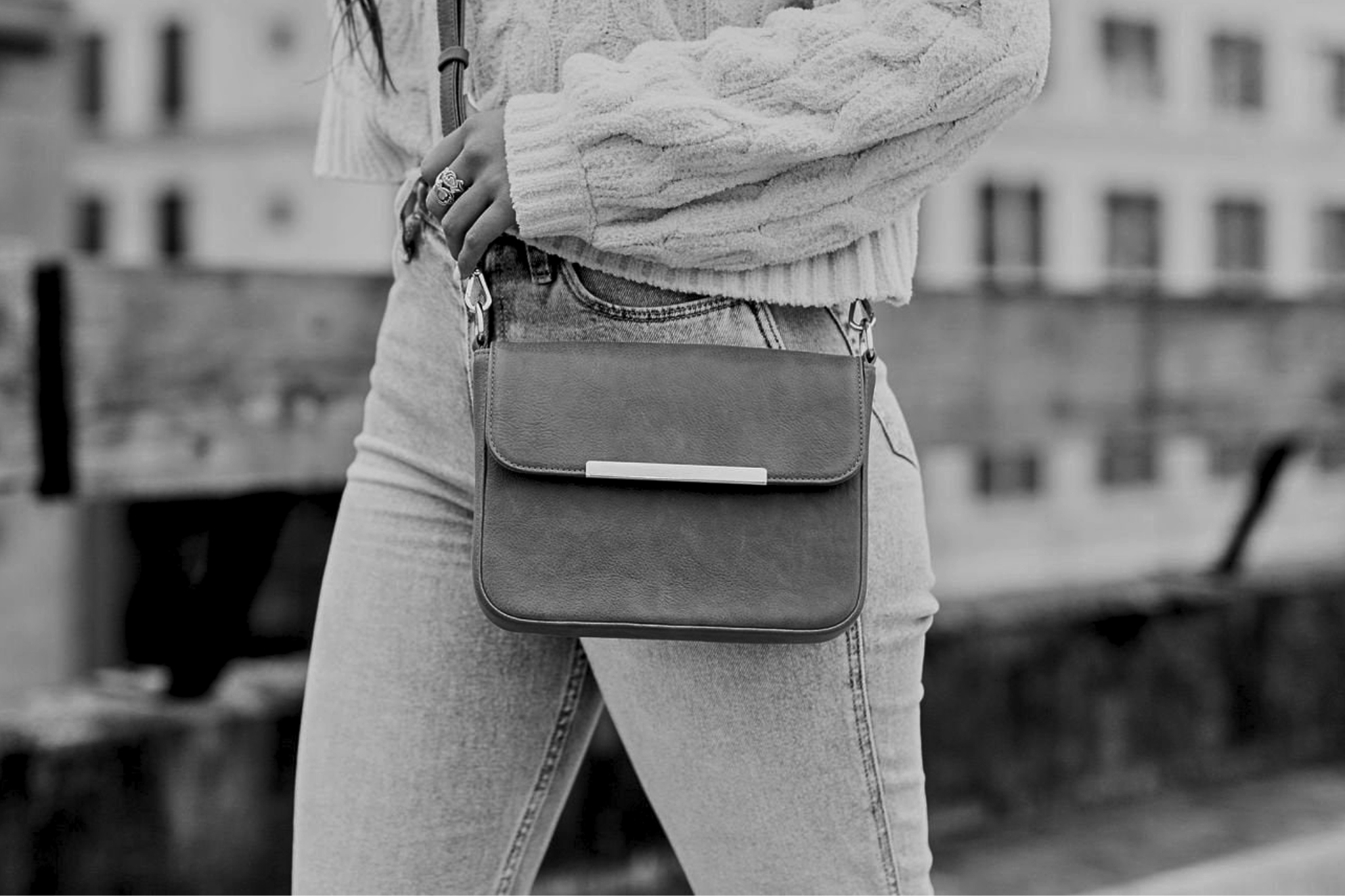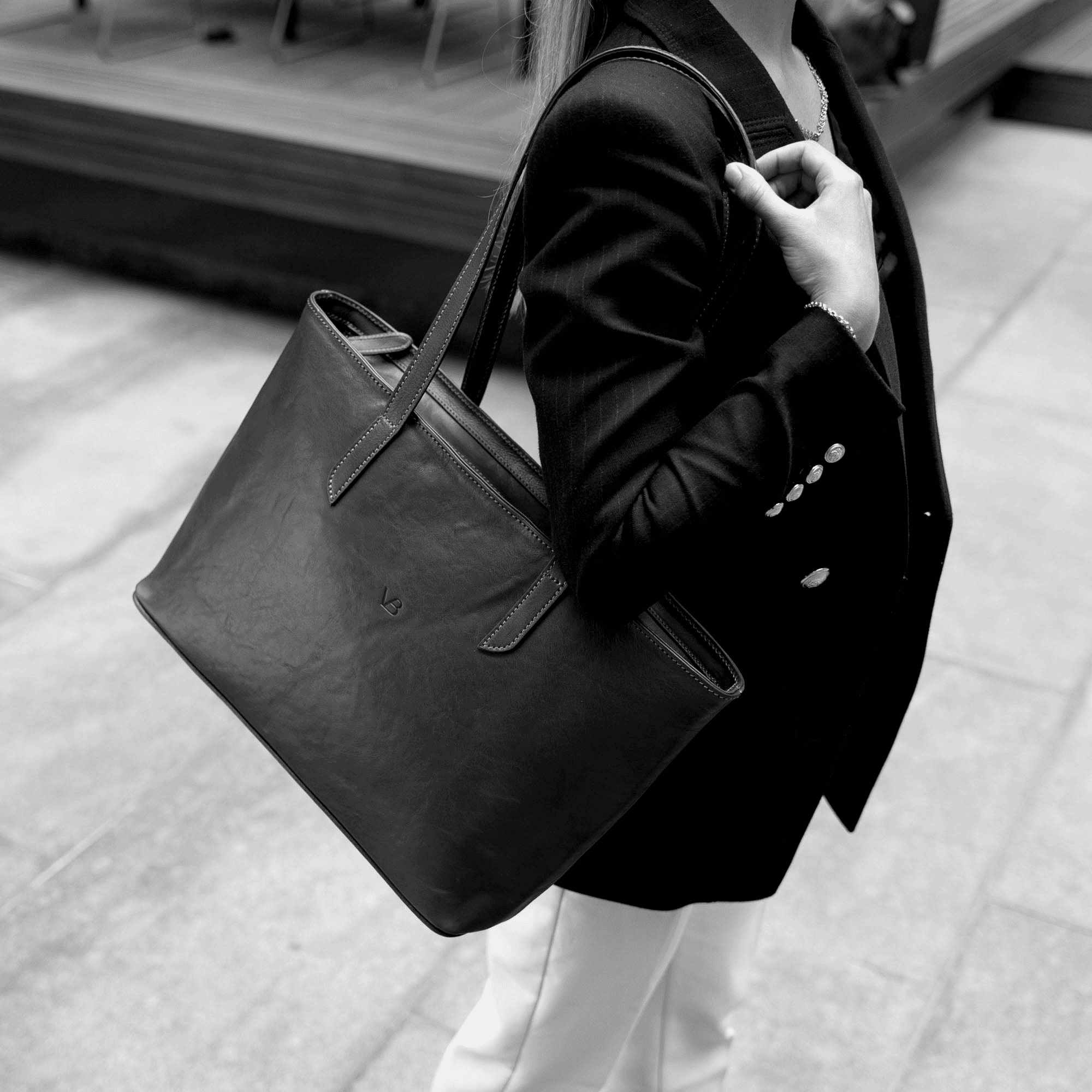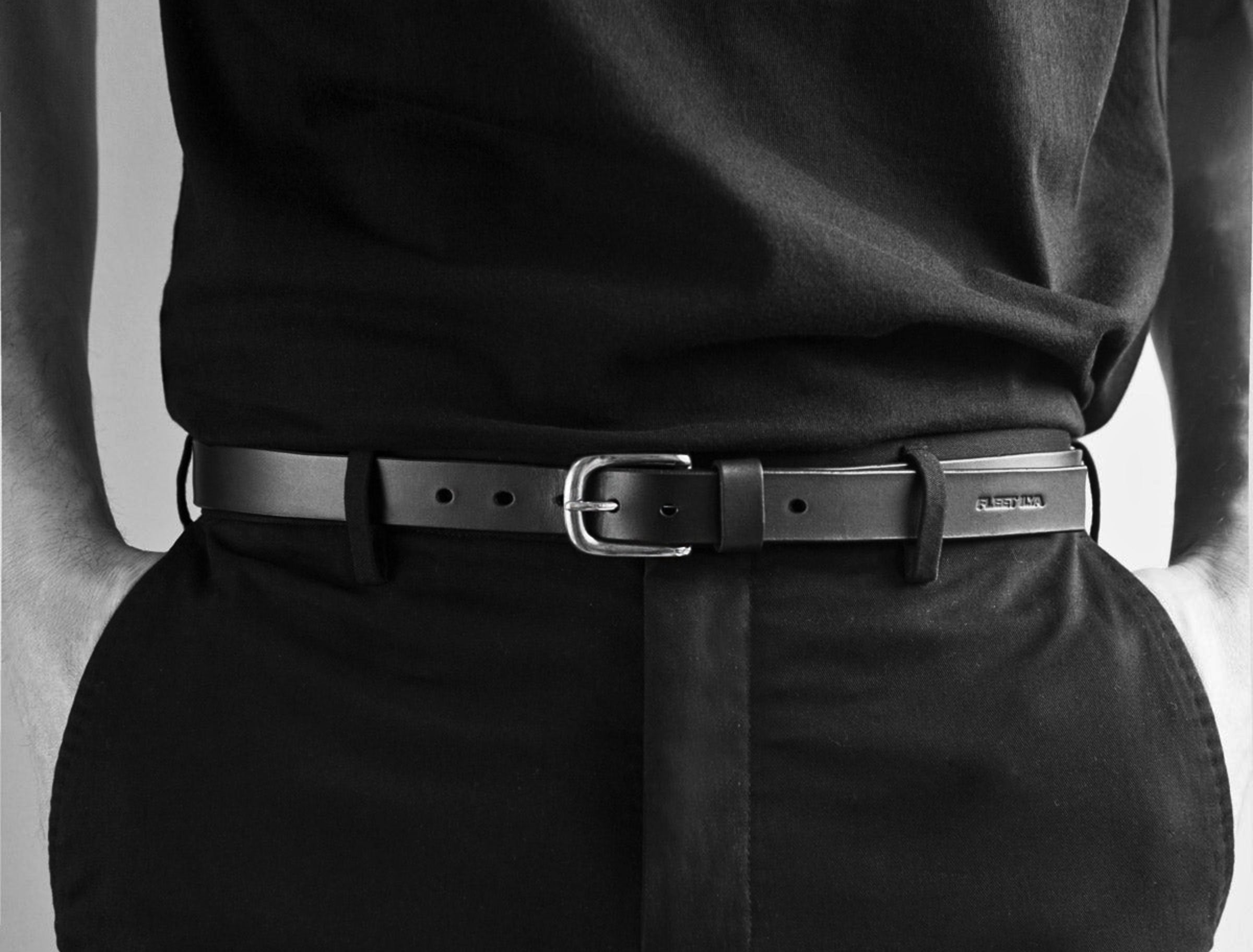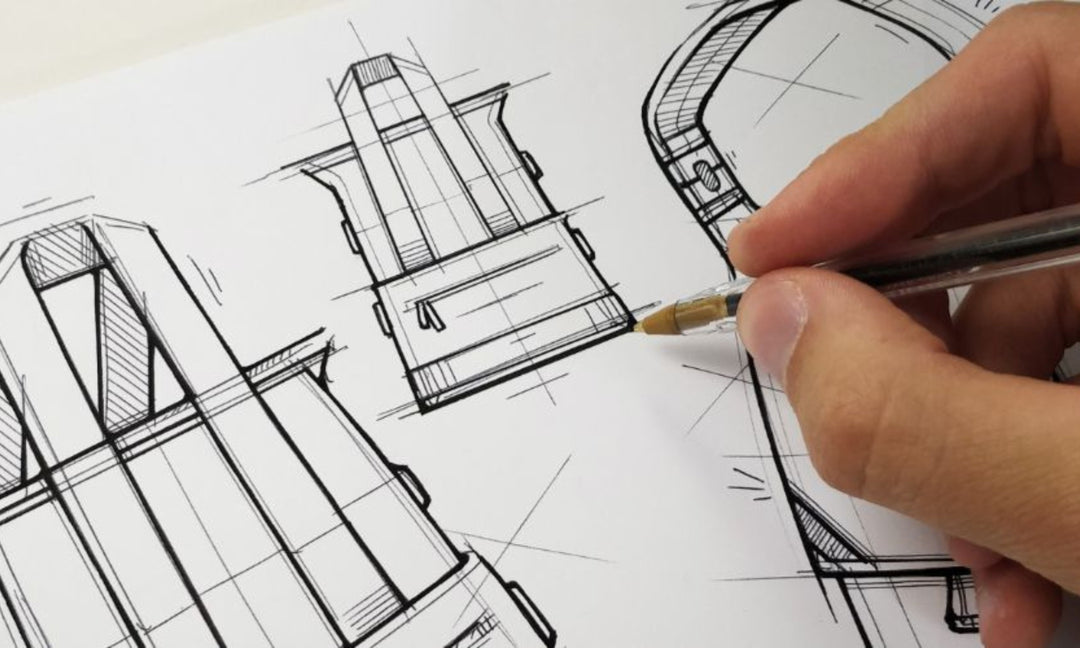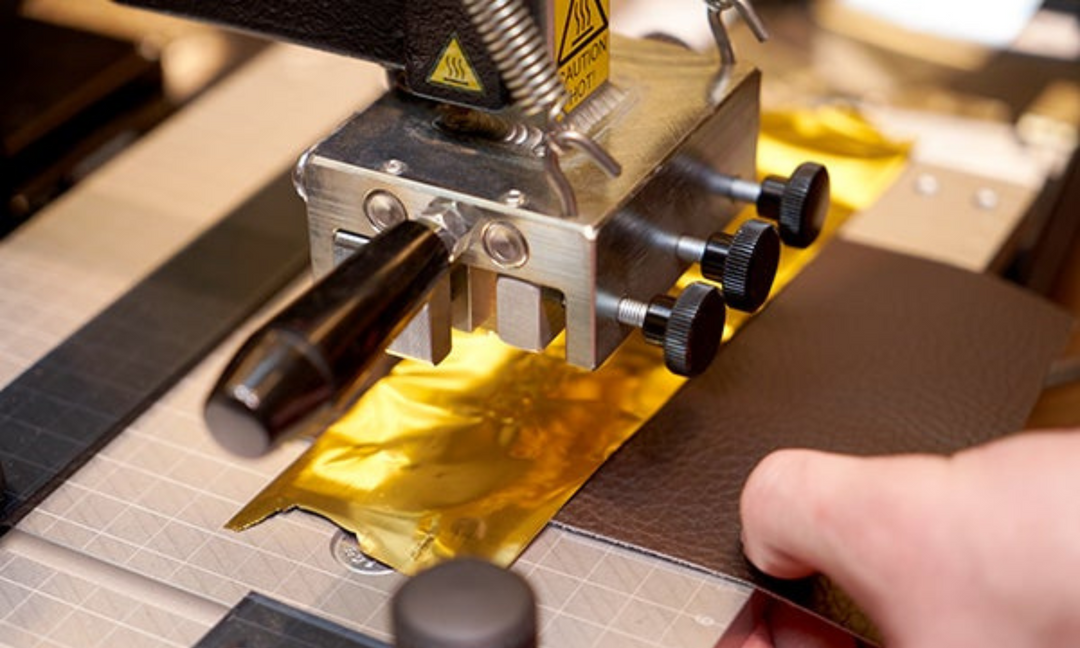The durability of leather cosmetic bags
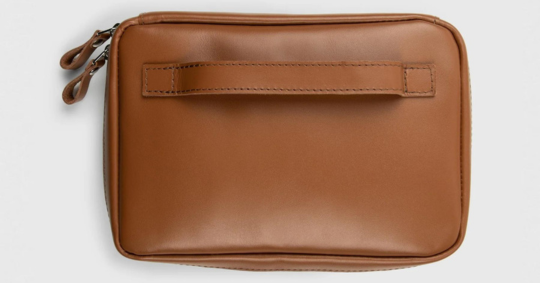
The durability of leather cosmetic bags
Brief overview of the article's focus
The enduring allure of leather
Types of leather cosmetic bags
Craftsmanship and quality
Care and maintenance tips
Sustainable leather alternatives
Choosing the perfect leather cosmetic bag

Understanding leather
An introduction to leather as a material
Different types of leather used in cosmetic bags
-
Full-grain leather: Full-grain leather is the highest quality and most desirable type of leather. It is derived from the top layer of the animal's hide and retains the natural grain, making each piece unique. This type of leather develops a beautiful patina over time, showcasing its authenticity and enhancing its aesthetic appeal. Full-grain leather cosmetic bags are known for their durability, as they are less prone to wear and tear.
-
Top-grain leather: Top-grain leather is another popular choice for cosmetic bags. It is obtained by splitting the top layer of the hide and removing the natural grain. While it may lack the natural markings of full-grain leather, top-grain leather is more uniform in appearance and offers excellent durability. Cosmetic bags made from top-grain leather strike a balance between quality and affordability, making them a practical choice for many.
-
Genuine leather: Genuine leather is a broad term used to describe leather that has been processed and created using various methods. It is typically made from the lower layers of the hide and undergoes treatments to enhance its appearance and durability. While genuine leather is less expensive than full-grain and top-grain leather, it still offers a decent level of quality and can be found in a wide range of cosmetic bags.
Factors influencing the durability of leather cosmetic bags
-
Tanning process: The tanning process plays a crucial role in determining the durability and quality of leather. There are two primary methods of tanning: vegetable tanning and chrome tanning. Vegetable tanning uses natural tannins derived from plant sources, resulting in a more environmentally friendly and organic process. On the other hand, chrome tanning utilizes chromium salts, which provide a faster and more cost-effective tanning process. Both methods have their advantages, and the choice depends on the desired characteristics of the leather.
-
Leather thickness: The thickness of the leather used in cosmetic bags significantly impacts their durability. Thicker leather tends to be more robust and can withstand daily wear and tear, ensuring a longer lifespan for the bag. However, it's important to strike a balance, as excessively thick leather can make the bag bulky and less practical for everyday use.
-
Stitching quality: The stitching quality of a leather cosmetic bag is a crucial aspect that determines its durability. Strong and well-executed stitching ensures that the bag can withstand the weight of the contents and the rigors of daily use. High-quality stitching prevents the leather from unraveling or tearing apart, enhancing the overall longevity of the bag.
Design features for durability
Structural components that enhance durability
-
Reinforced corners: Reinforced corners are a vital feature that helps protect the bag from damage caused by rough handling or accidental drops. By reinforcing the corners with additional layers of leather or sturdy materials, cosmetic bags gain extra strength in vulnerable areas, minimizing the risk of tearing or deformation.
-
Double-stitched seams: Strong seams are essential for ensuring the longevity of a leather cosmetic bag. Double-stitched seams, where two parallel lines of stitching secure the fabric, provide added strength and prevent the seams from unraveling or coming apart. This construction technique reinforces the bag's structural integrity, making it more durable.
-
High-quality zippers: Zippers are a critical component of any cosmetic bag, and opting for high-quality zippers significantly contributes to its durability. Look for cosmetic bags with robust, metal zippers that glide smoothly and withstand frequent opening and closing without jamming or breaking. A well-constructed zipper adds to the overall longevity of the bag.
Interior organization for added durability
-
Compartments and pockets: Well-designed compartments and pockets provide separate storage spaces for different cosmetics, preventing them from colliding and causing damage. Dividing your cosmetics into compartments also helps maintain their original condition and prevents them from leaking or spilling onto other items.
-
Reinforced dividers: Reinforced dividers within the compartments add an extra layer of protection to the bag's interior. These dividers are often made from sturdy materials such as reinforced fabric or rigid inserts. They help keep cosmetics in place and prevent them from shifting or rubbing against each other, reducing the risk of breakage or spillage.
Protective measures against wear and tear
-
Protective feet: Protective feet, typically made of metal or hard rubber, are placed on the bottom of the bag to prevent direct contact with rough surfaces. These feet elevate the bag, reducing the risk of scratches, scuffs, or damage caused by placing it on abrasive or dirty surfaces.
-
Water-resistant treatments: Applying water-resistant treatments to the leather surface helps protect the bag from moisture-related damage. These treatments create a barrier that repels water, preventing it from seeping into the leather and causing stains, warping, or deterioration. Water-resistant treatments enhance the bag's durability, especially in environments where exposure to liquids is common.
-
Scratch-resistant coatings: Applying scratch-resistant coatings to the leather surface provides an additional layer of protection against everyday wear and tear. These coatings create a barrier that helps minimize scratches, scuffs, and surface damage, preserving the bag's appearance and ensuring its long-term durability.
Caring for leather cosmetic bags
General maintenance tips for leather cosmetic bags
-
Cleaning techniques: Regular cleaning is crucial to remove dirt, dust, and any residue that may accumulate on the surface of your leather cosmetic bag. To clean your bag, start by gently wiping it with a soft, damp cloth. Avoid using excessive water or harsh cleaning agents as they can damage the leather. For stubborn stains, use a mild leather cleaner specifically designed for your bag's type of leather. After cleaning, allow the bag to air dry naturally.
-
Proper storage practices: When not in use, it's important to store your leather cosmetic bag properly to maintain its shape and condition. Store it in a cool, dry place away from direct sunlight, as exposure to sunlight can cause the leather to fade or crack. To retain the bag's shape, stuff it with acid-free tissue paper or use a bag organizer. Avoid storing your bag in plastic bags or airtight containers, as this can trap moisture and lead to mold or mildew growth.
Treating common issues with leather cosmetic bags
-
Removing stains: Stains can be a cause for concern, but they can often be treated effectively. First, identify the type of stain and check if there are any specific recommendations for removing it from your bag's type of leather. For general stains, use a mild leather cleaner and gently blot the stained area with a clean cloth. Avoid rubbing harshly, as it can damage the leather. If the stain persists, consider consulting a professional leather cleaner for expert assistance.
-
Restoring color and luster: Over time, leather may lose its original color and luster. To restore its vibrancy, you can use leather conditioners or balms that nourish and revitalize the leather. Apply a small amount to a clean, soft cloth and gently rub it onto the surface of the bag in circular motions. This helps replenish moisture and enhance the bag's natural shine. Be sure to follow the instructions provided by the product manufacturer and test the conditioner on a small, inconspicuous area before applying it to the entire bag.
-
Addressing minor damages: Minor damages, such as scuffs or scratches, can be treated with leather creams or polishes. Choose a product that matches the color of your bag and apply it to the affected area using a clean cloth. Gently buff the product into the leather until the damage becomes less noticeable. For deeper scratches or more significant damages, it is advisable to seek professional repair services to ensure proper restoration.

The longevity of leather cosmetic bags
Testimonials from satisfied users
-
Marissa, a travel enthusiast: "I've been using my leather cosmetic bag for over five years, and it still looks as good as new. The quality of the leather and the craftsmanship is exceptional. I travel frequently, and my bag has endured various climates, rough handling, and countless trips. It's remarkable how well it has held up over the years."
-
Emily, a professional makeup artist: "As a makeup artist, I rely heavily on my cosmetic bag to carry my essential products. My leather cosmetic bag has been my go-to companion for more than three years now. The durability is outstanding. It has endured constant use, being tossed into suitcases, and even accidental spills. Despite the rigorous demands of my profession, the bag remains in excellent condition."
-
Sarah, a fashion enthusiast: "I purchased my leather cosmetic bag as an investment piece, and it has exceeded my expectations. The craftsmanship is impeccable, and the leather ages beautifully. I've had it for over four years now, and it still looks stunning. The bag has become a staple in my daily routine, and I have no doubt it will continue to serve me for many more years."
Real-life examples of long-lasting leather cosmetic bags
-
Vintage leather cosmetic bag: Susan inherited a vintage leather cosmetic bag from her grandmother, and it has been passed down through generations. The bag, now over 30 years old, showcases the timeless quality of leather. Despite its age, it remains intact, with minimal signs of wear. This real-life example demonstrates the enduring nature of leather cosmetic bags when cared for properly.
-
Professional stylist's leather cosmetic bag: Jason, a professional stylist, relies on his leather cosmetic bag for his clients' photo shoots and events. His bag has been in use for over seven years, enduring the demands of a fast-paced industry. Despite the constant handling, packing, and unpacking, the bag maintains its shape, with no signs of structural damage. This exemplifies how a high-quality leather cosmetic bag can withstand the rigors of a professional setting.
-
Frequent traveler's leather cosmetic bag: Jessica, a frequent traveler, invested in a leather cosmetic bag to accompany her on her adventures. Over the course of five years, the bag has endured various climates, multiple trips, and being stowed away in cramped spaces. Despite the constant exposure to different environments, the bag remains sturdy and aesthetically appealing. This real-life example demonstrates the resilience of leather cosmetic bags during extensive travel.
Comparison with other materials
Leather vs. synthetic materials
-
Durability factors: Leather surpasses synthetic materials in terms of durability. Genuine leather is known for its ability to withstand wear and tear, making it a reliable choice for long-lasting cosmetic bags. Synthetic materials, on the other hand, may show signs of deterioration over time, such as peeling, cracking, or discoloration.
-
Environmental impact: Leather is a natural material, typically sourced from animal hides. While there are ethical considerations regarding the leather industry, it is important to note that many leather manufacturers adhere to strict regulations and ethical practices. Synthetic materials, on the other hand, are often derived from petroleum-based products, making them less environmentally friendly due to their non-biodegradable nature.
Leather vs. fabric materials
-
Strength and resilience: Leather excels in terms of strength and resilience. It is a sturdy material that can withstand daily use and resist damage. Its inherent properties make it highly resistant to tears, punctures, and abrasions. Fabric materials, while offering a wide variety of patterns and designs, may not provide the same level of strength and resilience as leather.
-
Maintenance and care: Leather requires specific care to maintain its beauty and extend its lifespan. It needs occasional conditioning and protection from moisture. However, fabric materials are often machine washable and may be easier to maintain. They can be subjected to regular washing without fear of damage or alteration in appearance.
Frequently Asked Questions (FAQs)
A. Are leather cosmetic bags more durable than other materials?
B. How can I ensure the longevity of my leather cosmetic bag?
- Keep it away from direct sunlight, excessive heat, and moisture.
- Clean it regularly with a soft cloth and mild leather cleaner.
- Apply a leather conditioner periodically to nourish and protect the leather.
- Store it in a cool, dry place when not in use, preferably in a dust bag or pillowcase to prevent dust accumulation.
- Avoid overstuffing the bag to maintain its shape and prevent unnecessary strain on the leather.
C. Can leather cosmetic bags withstand harsh conditions?
D. Is genuine leather the best choice for durability?
E. What are the key differences between full-grain and top-grain leather?
-
Full-grain leather: Full-grain leather is the highest quality of leather, known for its natural beauty and durability. It retains the entire grain layer, including the original markings, giving it a unique character. Full-grain leather develops a beautiful patina over time and is highly resistant to moisture and wear.
-
Top-grain leather: Top-grain leather is also of high quality but undergoes a slight surface treatment to remove any imperfections. It is more uniform in appearance compared to full-grain leather. Top-grain leather maintains its strength and durability while offering a smoother and more refined surface.
F. Can leather cosmetic bags be repaired if damaged?
Summary and conclusion
Recap of key points discussed
-
Understanding leather: We started by introducing leather as a material, highlighting its natural beauty, strength, and versatility.
-
Different types of leather: We explored the various types of leather used in cosmetic bags, including full-grain, top-grain, and genuine leather, discussing their characteristics and differences.
-
Design features for durability: We examined the structural components and interior organization features that enhance the durability of leather cosmetic bags, such as reinforced corners, double-stitched seams, compartments, and reinforced dividers.
-
Caring for leather cosmetic bags: We provided general maintenance tips and techniques for treating common issues, ensuring that your leather cosmetic bag remains in excellent condition for years.
-
The longevity of leather cosmetic bags: We presented testimonials from satisfied users and real-life examples of long-lasting leather cosmetic bags, showcasing their ability to withstand the test of time.
-
Comparison with other materials: We compared leather with synthetic materials and fabric materials, discussing factors such as durability, environmental impact, strength, resilience, and maintenance.
-
Frequently Asked Questions (FAQs): We addressed common queries regarding the durability, longevity, and repair of leather cosmetic bags, providing helpful insights for potential buyers.
